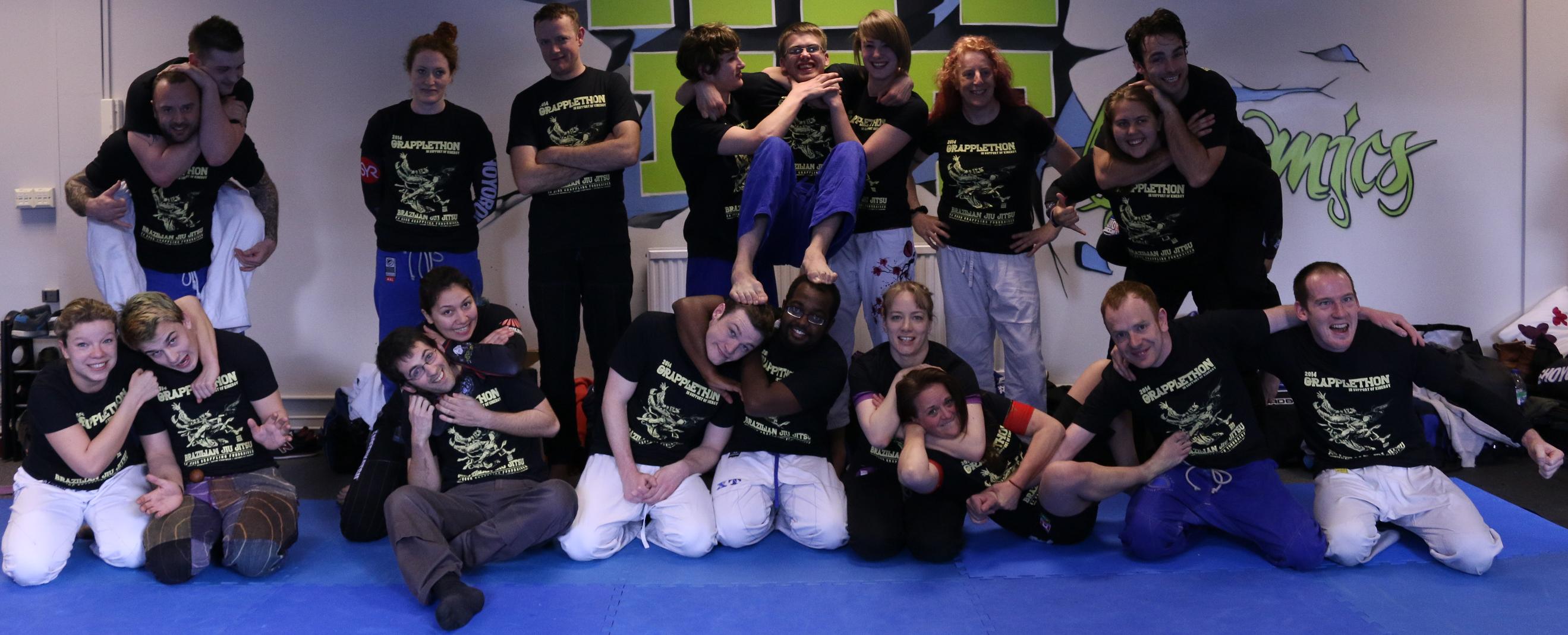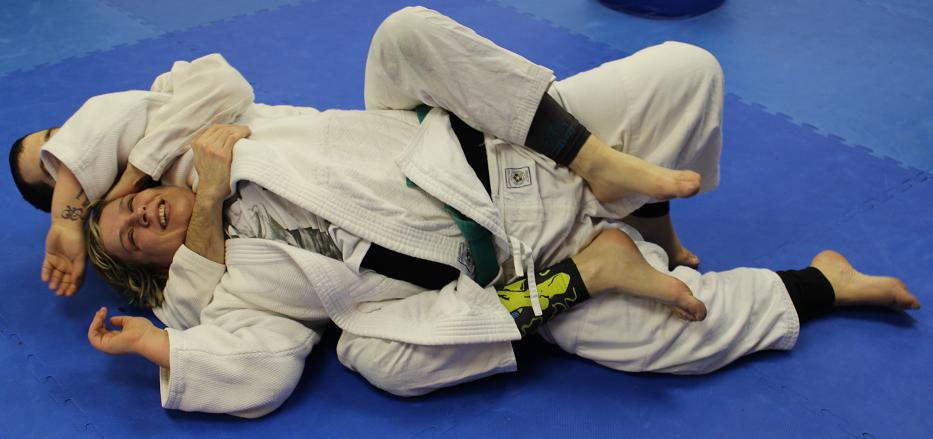Class #517
Gracie Barra Bristol, (BJJ), Study Hall, Bristol, UK - 11/08/2013
Today I continued focusing on the back, still one of my main weak areas at the moment. Previously I would have said passing the guard was my biggest weak point, but I think the private lessons have helped a lot with that. I wouldn't say I'm confident passing yet, but I at least feel I have an idea where I want to go: previously, I'd end up staring blankly at somebody's open guard.
Having said that, since training at GB Bristol, I've also mainly been rolling with white and blue belts rather than purples and up, which is obviously a very different proposition. For a start, I rarely have people stick me in closed guard, which I should practice against more often. It would be good to get in more rolls with Dónal, as he's the closest to my size, along with the other two purple belts, Miles and Liam, plus high level blues like Tony. There is Geeza too, naturally, but although he's a black belt, he's so much bigger than me that I don't tend to get much of our rolls.
Interestingly, that need for partners with greater experience was mentioned by several of the higher level blue belts I drilled with today. Although there are definitely advantages to having lots of less experienced training partners - the biggest one is that you can test out techniques in which you lack confidence - they don't react the same way as somebody who has been training longer. The ideal situation is a relatively even spread of people who are less experienced, people at the same level and people who have been training longer than you. Hence why it is so useful to occasionally train at other schools, for both that broader range of experience and different games to what you're used to.

I'm teaching maintaining the back next week, so as I try to enable students to practice the techniques they learn in class when I teach, that means I'll also want to keep working on escaping the back. Rewatching a few of the back escape videos in my archive, I realised that the brief section Ryan Hall includes in his DVD on the back looks quite similar to what I learned from Dónal.
There is the same head to the mat process, followed by a switch to deep half when they try to mount. The two escapes I wanted to practice were Hall's take on using your foot to push the opposite hook free. Dónal did cover this in the private, but I don't think I remembered to cover it in the little review video we always do at the end of privates. So, study hall was a good opportunity to practice it.
The first
back escape begins by getting your head to the mat, like Dónal demonstrated. You then push their hooking foot off with your opposite heel, immediately bringing your hips over. With that same heel, block the leg you just cleared out of the way. Keep shifting round, then either move to the top (if you're able to control their head in the way I like to), or take deep half and spin to the top.
Drilling that version with Luke (the bigger one: I drilled with both Lukes today ;D) yielded two pointers for improvement. Getting the shoulders to the mat is key: to get them there, I need a bit more explosion. It shouldn't take too much energy, just that extra twist to get myself out of range of most chokes. On that point, bow and arrow type chokes are dangerous, so I can never be complacent: Luke caught me in a very tight grip.
Secondly, something somebody mentioned in the changing room, which is pushing the head across. I have been getting lazy about that and been driving my own head across. If I instead make sure I am actually pushing their head across, that both gets my head in position, but it also puts my shoulders in the right place too.
Another variation Ryan Hall does when you end up on the 'wrong' side. Again, push their foot off with your opposite heel. Pop your hips over, then with that same heel, block the leg you just cleared out of the way. Next is a motion that Xande does on his DVD as well, reaching back with the non-choking side arm and grabbing around their head. From there, turn your hips towards their head, sliding your lower leg through, then securing some variation of side control.
This one was harder to get: I generally found it difficult to push off hooks, especially with Bigger Luke, as he had his feet solidly crossed off to the side (I did at one point try pushing them across to get that classic footlock, but to no avail). It's also important to turn the right way. If I try turning over the top, towards their legs, I will often get stuck.
Turning your hips towards their head instead is easier, but your head then becomes an important extra limb. I drove it up across Smaller Luke's chest (getting a worried squealing noise from the hair on the top of my head: better suited to those with shaved heads, I think). That maintains your control on their upper body.
I also practiced maintaining the back for Tuesday, working both the Marcelo tips and the stuff I was playing with on
Friday (though using a single hook for back control is something Marcelo briefly talks about in
his book). It seemed to function ok, although after doing it with more resistance I found my left hamstring felt slightly sore afterwards, which indicates I was using too much force on that side (interestingly, that was the free hook, not the one I had threaded through both legs).
Dónal's guard sweeps with the lapel were up next, mainly just getting in reps, before returning to more work on back escapes. I also got to drill lots of guard posture (which fits in nicely with what I said earlier about wanting to practice more against closed guard), because Smaller Luke wanted to practice his overhook guard. Initially that was with no resistance, then we upped it gradually. The big difference for me was going up on my toes, like Caio Terra advises. It isn't comfortable, but it massively increases your ability to drive, resist and adjust when in somebody's closed guard.








